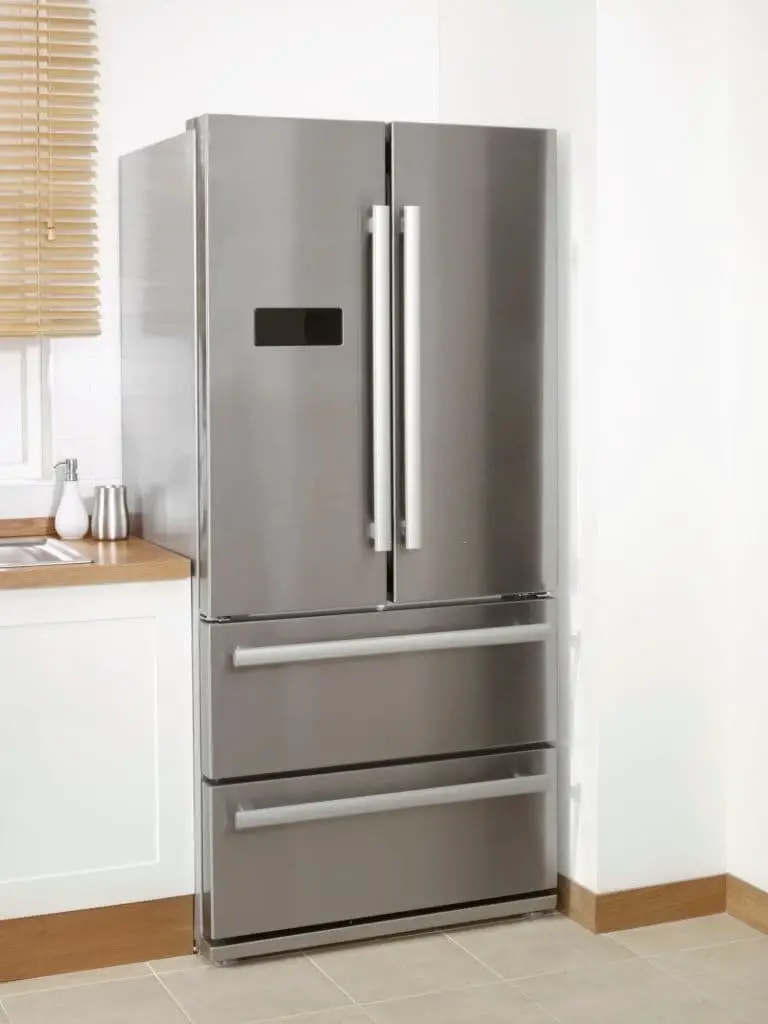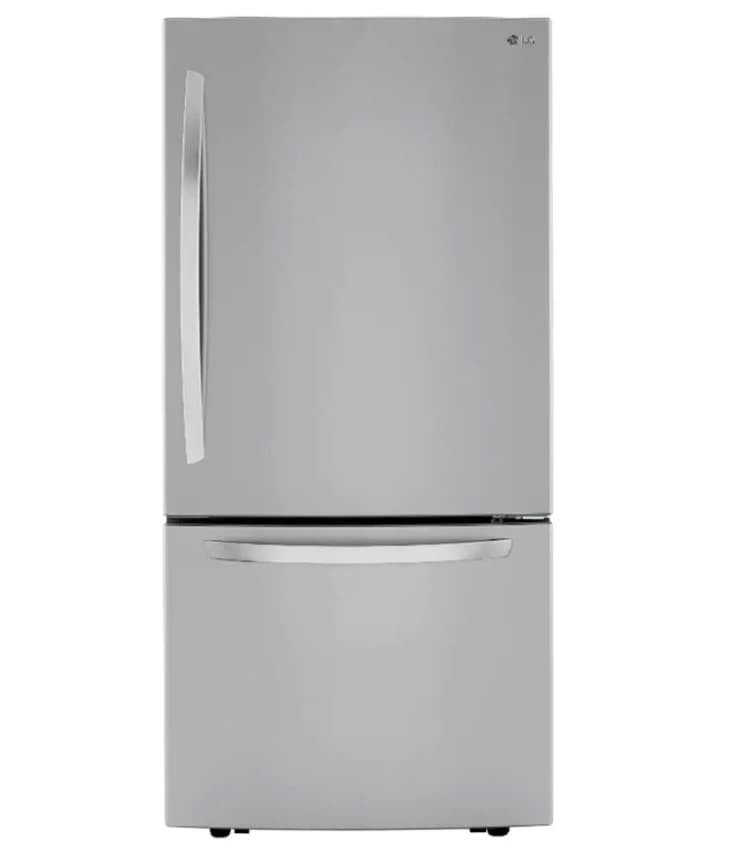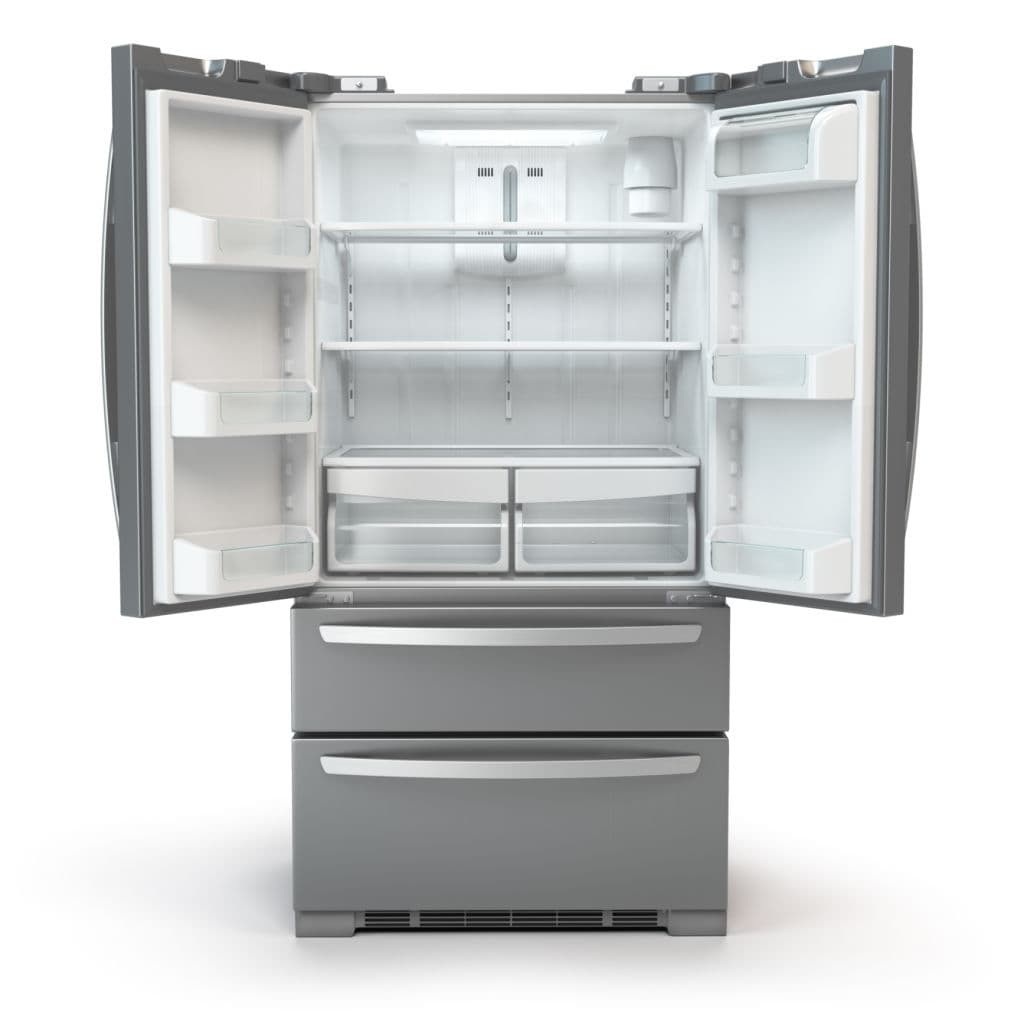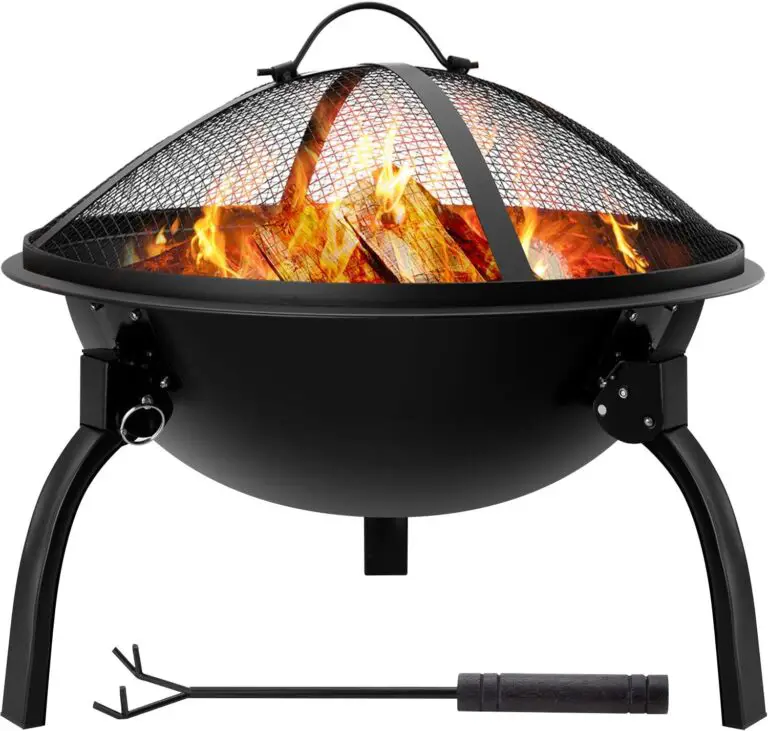How Much Does A Refrigerator Weigh? (By Types, Styles, Sizes)
You may not see the significance of knowing a refrigerator’s weight at this moment, but we assure you that it will become crucial when you’re planning your first home move. The weight of a refrigerator can vary greatly depending on its type, style, and size, even though the specifications usually provide this information. Many consumers overlook this detail before purchasing a new fridge.
In this article, we’ll delve into the different categories of refrigerator weights and offer valuable moving tips for future reference. If you’re interested in learning more, keep reading.
Refrigerator weights by type
When considering the weight of refrigerators, one of the most striking variations is indeed among different types. This section aims to provide a comprehensive overview of refrigerator weights, highlighting subtle and substantial differences across various categories.
How much does a French door refrigerator weigh?

French door refrigerators have taken the market by storm, boasting side-by-side double doors for effortless access to your refrigerator’s top shelf and at least two drawers below for convenient storage of frozen goods. Not only do they offer a unique design, but they also happen to be the heaviest refrigerators on the market, weighing in at anywhere from 230-390 pounds.
When it comes to per cubic foot capacity, French door refrigerators come out to around 13 pounds, making them a significant investment for any homeowner. Some popular brands and their respective specifications include Samsung’s 27.87 cu. ft. model with dimensions of 35.75 inches tall, 36.53 inches wide, and 59 inches deep, weighing in at 359 pounds; LG’s 25.16 cu. ft. model with dimensions of 9.88 inches tall, 32.75 inches wide, and 55.23 inches deep, weighing in at 333.
7 pounds; and finally, Samsung’s 28.27 cu. ft. model with dimensions of 35.75 inches tall, 54.27 inches wide, and 76 inches deep, weighing in at 359 pounds.
How much does a side-by-side refrigerator weigh?

For those who appreciate sleek designs and modern aesthetics, a side-by-side refrigerator is the perfect choice. This type of appliance features separate compartments for frozen and fresh foods, each with its own dedicated door. The ice dispenser is often conveniently located on one of the doors, making it easy to access your frozen treats.
When it comes to weight, side-by-side refrigerators typically tip the scales at around 285 pounds, although some models can range from as light as 240 pounds up to a maximum of 340 pounds. On average, these appliances weigh about 12 pounds per cubic foot capacity, providing ample space for your food and drinks.
How much does a bottom freezer refrigerator weigh?

Bottom-freezer refrigerators are a staple design, featuring the freezer compartment at the bottom and the fridge on top. Due to their heavier construction, these models typically weigh between 120-290 pounds, with an average weight of around 215 pounds. In terms of storage capacity, bottom freezers can accommodate approximately 11 cubic feet, making them suitable for households requiring ample space for food and beverages.
How much does a top freezer refrigerator weigh?

When it comes to smaller households and more compact living spaces, the classic top freezer refrigerator remains the top pick. These models are generally designed to be smaller and lighter than their counterparts, making them a practical choice for those with limited space. On average, they typically weigh around 165 pounds, but it’s not uncommon for them to fall within a broader weight range of 115-220 pounds across different brands.
What’s notable about top freezer refrigerators is that they often pack a surprising amount of capacity into their compact design, boasting an impressive per-cubic-foot performance of 10 pounds – a testament to the fact that size and weight don’t necessarily dictate storage capabilities.
How much does a mini refrigerator weigh?

Compact freezers are designed for small spaces, such as studios or cozy rooms. Their miniature size belies their functionality, making them perfect for limited real estate. While mini fridge models from various brands typically weigh around 60 pounds on average, with a range of 22-95 pounds, their per cubic foot weight capacity is surprisingly high – 13 pounds. This allows them to hold more items than larger refrigerators, making them an attractive option for those with limited storage space.
How much does an under counter fridge weigh?
An under-counter fridge, as its name suggests, is designed to be built-in beneath countertops and along the rows of cabinets underneath the sink area. Depending on the model and design, these fridges can feature single-door or multi-door configurations.
When installing an under-counter fridge, it’s essential to note that they typically weigh between 60-130lbs, which may not seem significant at first glance.
However, their weight capacity is commendable, with some models capable of accommodating up to 10 cubic feet of storage space. What’s more, these fridges function entirely as a refrigerator, allowing you to maintain an additional fridge and freezer setup in larger kitchens.
How much does a commercial refrigerator weigh?
While standard commercial refrigerators typically feature two or three doors and weigh under 300 pounds, the market is now offering more compact options that tip the scales at around 220 pounds. Meanwhile, the overall weight range for these appliances usually falls within a 100-pound margin, from approximately 250 to 350 pounds.
How much do refrigerator doors weigh?
When planning a move or upgrading your home’s refrigerator, a crucial consideration is the weight of refrigerator doors. On average, doors on two-door and larger refrigerators weigh around 35 pounds each, making them a substantial factor to keep in mind during relocation. In contrast, more compact options like under-counter fridges typically have door weights ranging from 20 pounds or less, while commercial-grade refrigerators often feature door weights of at least 35-60 pounds.
How much does a refrigerator weigh without doors?
To determine the refrigerator’s weight excluding the doors, it’s necessary to subtract at least 35-60 pounds from its total weight. This is based on the average weights we’ve discussed earlier. For a more detailed breakdown of the average weight of different refrigerator brands without doors, refer to our curated list featuring top ref brands, their type, and their average weight for further reference.
How much does an empty refrigerator weigh?

While there is no specific weight limit to abide by when it comes to refrigerator installation, industry experts generally recommend that the total weight should be below 300 pounds. This figure can vary slightly depending on the type, size, and model of the refrigerator in question. However, side-by-side and French door refrigerators often weigh significantly more, typically ranging from 300-350 pounds at most.
How much does the top of fridge weigh?
While this consideration only applies to refrigerator models equipped with a top compartment, it’s essential to note that the average weight of the top section itself is around 60 pounds. This space can also be used to store small appliances like microwaves, as well as decorative items such as plant vases, enhancing the overall aesthetic appeal.
However, for optimal performance and efficient heat dissipation, it’s recommended to keep this area clear and avoid obstructing the top compartment, allowing the refrigerator to maintain its peak functionality.
Factors impacting refrigerator weight

When selecting a new refrigerator or upgrading your existing one, it’s crucial to understand the various factors that influence their weight. From compact models to full-size appliances, refrigerators can vary significantly in terms of their mass. It’s essential to consider these factors, regardless of whether you’re shopping for a new appliance or renovating your kitchen.
Manufacture year
While older refrigerators tend to be heavier than their modern counterparts, this is largely due to the presence of bulkier components such as larger compressors and more complex electrical systems. As a result, average weights for older models typically range from 250lbs to above. In contrast, contemporary refrigerator designs have incorporated lighter materials and simplified systems, making them significantly more portable.
These newer models often feature removable parts for effortless maintenance and replacement, with an average weight range of 170-350lbs.
Refrigerator model
When it comes to refrigerator weight, different reference models often exhibit distinct characteristics. Notably, French door and side-by-side refrigerator models tend to be among the heaviest, as we explored in our previous discussion. It’s reasonable to assume that ref models of these types would naturally outweigh their counterparts.
Fridge size
Refrigerators with greater heights often come with increased weights as well, making them a crucial consideration when weighing options. This relationship between height and weight is logical, given that taller units tend to pack more features than their shorter counterparts. As such, the choice of refrigerator height plays a significant role in determining the overall weight of the appliance.
Fridge features
When evaluating refrigerator options, it’s essential to consider the additional features that come with certain brands and models. These extras, such as water tanks or ice makers and dispensers, often contribute to increased weight. To achieve a balance between functionality and portability, look for ref models constructed from lightweight materials throughout. This way, you can enjoy the benefits of extra features without compromising on ease of movement.
Moving a refrigerator tips
When dealing with a large and cumbersome refrigerator, it’s inevitable that moving it will be a laborious process. However, having the right approach can significantly minimize the risk of scratching floors, tedious tasks, and other potential issues. By following these practical refrigerator moving tips, you’ll be well-equipped to handle the task with ease.
Defrost and clean the unit
Before commencing the relocation process, it’s essential to thoroughly prepare your refrigerator for the task. Begin by emptying its contents, disposing of any items that are no longer needed or have expired. Designate large coolers for perishable items such as meat and dairy products, taking into account the time required for cleaning and defrosting. Once the refrigerator is empty, employ dishwashing liquid or baking soda to scrub away any stubborn stains and residue.
Additionally, ensure all remaining ice in the freezer is melted and immediately dried using a hair dryer to prevent any accidental leaks that might occur during the relocation process.
Disconnect the fridge
When preparing to relocate a refrigerator with a ref model featuring a water tank and ice maker, it’s crucial to disconnect these components first. Consult the user manual to ensure proper disconnection procedures are followed. Once complete, secure any exposed cords and proceed with removing the doors if necessary. Keep small parts, screws, and other miscellaneous items in a zip-lock bag for safekeeping.
As you continue, carefully remove all glass shelves and drawers.
To transport them safely, wrap each item individually in moving blankets or cushioned boxes. Simply taping them would not provide sufficient protection against damage. This meticulous approach will help prevent costly repairs or replacements during the relocation process.
Include door measurements in your moving plan
When preparing to relocate a refrigerator, ensuring a proper fit through your home’s entryways is crucial. To avoid any potential issues, measure the width of your appliance and verify that it can pass safely through your doors. A misfit could lead to frustrating complications, making it essential to plan ahead and double-check your measurements before starting the move.
Remove obstructions
When preparing to relocate a refrigerator, it’s crucial to clear any obstructions that may hinder movement. A key step in this process is creating a path for the appliance to travel from its current location to the moving truck. This often involves removing surrounding furniture, as well as any door hinges or stair railings that may be obstructing the path.
By doing so, you’ll be able to easily maneuver the refrigerator into the moving truck, ensuring a smoother and more efficient relocation process.
Strap it on to the dolly
The convenience of most refrigerators lies in their wheeled design, allowing you to easily slide them out. Nevertheless, it’s crucial to provide adequate support during relocation, requiring someone to stabilize both sides and secure the fridge onto a dolly for smooth movement. When utilizing this approach, be mindful not to push the dolly against the refrigerator’s back or front, as its primary function is to maintain the appliance’s position.
Tilt back the refrigerator and move it slowly
When setting up your camera on a dolly, it’s essential to start by positioning the reference point (ref) squarely and then slowly tilting it back. Be mindful not to exceed an angle of 45 degrees. Before making any movements, take a moment to assess the terrain you’re working with. If needed, don’t hesitate to enlist the help of someone else. The key to success is maintaining control over the dolly at all times, especially when navigating stairs, where caution is paramount.
Roll the refrigerator into the moving truck
When preparing your refrigerator for relocation, start by finding a sturdy plank or platform within the moving truck. From here, carefully guide the appliance onto the surface to minimize the physical strain and time spent lifting it. As you do so, be mindful of the importance of maintaining the refrigerator’s upright position at all times. Avoid laying it on its side, as this can pose potential risks and complications during transit.
Other important notes
When preparing to set up your new home’s refrigerator, there are crucial steps to take before plugging it in. Start by consulting the user manual, which typically recommends a 24-72 hour delay before storing perishable items inside. To prevent moisture and odor buildup during this period, keep the fridge doors open and consider placing charcoal inside to minimize any unpleasant smells.
When transporting the appliance to its new location, ensure you position it upright in the moving truck to avoid damage. Moreover, never attempt to move the refrigerator solo; instead, recruit additional help to secure it on a sturdy dolly, guaranteeing safe transit for your valuable appliances.
FAQs
When discussing refrigerator features and weight comparisons, it’s equally crucial to consider the logistics of transporting these appliances. To ensure a smooth process, it’s essential to understand the following frequently asked questions that may arise when moving refrigerators.
Why is my fridge so heavy?
When it comes to understanding why your fridge feels like it’s weighing you down, there are several factors at play beyond just the model, type, and size. One crucial contributor to its heft is, surprisingly, what’s inside. The way you organize the contents can significantly impact the overall weight of the appliance. A haphazard arrangement of items on shelves can, in fact, add unnecessary bulk.
To mitigate this issue, it’s essential to ensure that each item is stored in its designated spot, promoting balance within the fridge. Furthermore, if ice buildup has occurred, be prepared for a significantly heavier refrigerator, as this excess moisture only adds to the weight.
What happens if you plug in a fridge after moving it?
Before powering on your appliance after relocating it, it’s crucial to refer to the user manual first. A common mistake is plugging it in as soon as you move it in, but this can have serious consequences. The reason for this cautionary step is that any oil inside the compressor may not have settled yet, which could result in drips or leaks.
As the fridge will naturally move with the moving truck’s motion, you need to allow sufficient time for the oil to redistribute and settle back into its proper place. It’s vital to ensure the oil level remains stable, as running out of it can cause the motor and piston to seize, rendering your appliance inoperable.
How long should a fridge be off before moving it?
When preparing your refrigerator for relocation, allow at least four hours for the oil to settle following any previous mention. Additionally, take the time to ensure the appliance is completely dry to prevent moisture and odors from accumulating during transit.
How much does a refrigerator compressor weigh?
The weight of a refrigerator compressor varies significantly depending on the age and type of your appliance. For older models, the compressor typically weighs more than 30 pounds, while newer units tend to have compressors that weigh between 15-20 pounds. Interestingly, other adjacent components also follow this same weight range, with older models often featuring heavier components and newer ones having lighter counterparts.
What is the heaviest refrigerator type?
French door refrigerators are often considered the heaviest type, with a remarkable weight range of 230 to 390 pounds. In terms of storage capacity, they boast an impressive 13 pounds per cubic foot on average, translating to an overall average weight of approximately 315 pounds. This significant size and weight make them stand out among other types of refrigerators.
How heavy are modern refrigerators?
While discussing the characteristics of older and modern refrigerator models, we’ve touched on a notable disparity – their weight. On average, contemporary refrigerators tip the scales between 200-400 pounds. This range is influenced by factors such as the model type and brand. Nonetheless, it’s reasonable to assume that the median weight of modern refrigerators would fall around 220 pounds.
How do you move a refrigerator without a dolly?
When seeking an alternative to dollies for heavy furniture relocation, consider leveraging the functionality of furniture sliders. To achieve this, enlist the assistance of at least two individuals and secure furniture glides to the refrigerator, ensuring stability is maintained during the process. Prior to attempting to tilt the refrigerator and move it down the stairs or onto a moving truck, ensure all necessary preparations are in place to guarantee a successful and safe relocation.
Can you put a rug under the refrigerator?
While it’s common for homeowners to place a rug under their refrigerators, doing so can actually hinder performance and potentially cause overheating. The added cooling unit installed beneath the refrigerator can become clogged by fabric, leading to increased temperatures that may even burn the rug if it gets too hot. This is particularly problematic, as modern refrigerators rely on these cooling units to function efficiently. However, there is an exception when it comes to mini fridges.
These compact appliances are surprisingly resilient and can operate effectively even on heavily carpeted floors. While this adaptability is a plus, it’s worth noting that their performance may not be quite the same as larger models.
Are refrigerator compressors recyclable?
Is it bad to sleep in the same room as the fridge?
While mini fridges have become increasingly popular, they’ve also led some to believe that sleeping in the same room as one’s refrigerator poses health risks due to alleged electromagnetic field (EMF) radiation emissions. However, there is no concrete scientific evidence to support this claim. In fact, research has failed to establish a direct link between fridge EMFs and diseases, effectively rendering it safe to cohabitate with your mini fridge at night.
Why does my fridge smell like nail polish?
If your refrigerator suddenly emits an unmistakable whiff reminiscent of nail polish, it’s time to sound the alarm. The culprit behind this pungent aroma is likely Freon, a refrigerant whose leakage poses a significant threat to both you and your food storage. As some of the escaped Freon could come into contact with edible items, swift action is crucial. If you’re unsure how to address this issue or lack the necessary expertise, seek guidance from a qualified professional without delay.
Why does my refrigerator with an ice maker smell like fish?
When your refrigerator with an integrated ice maker emits a pungent aroma, a possible cause lies in its single evaporator design, which is actually the standard configuration for most models. This setup means that only one air circulation pathway exists between compartments, allowing potent odors to dominate and permeate the entire space.
Conclusion
When selecting a refrigerator, the weight of the appliance plays a significant role in determining its overall size and capacity. The varying weights among refrigerators directly impact their dimensions, making it essential to consider this factor when making a purchase or relocating one. A range of factors influence the average weight of refrigerators, necessitating careful consideration of this characteristic during the selection process.
By understanding the typical weight ranges of different types of refrigerators, consumers can make more informed decisions and choose the most suitable appliance for their needs.
Related Posts
Experiencing issues with your Amana dryer not heating up? Don’t worry, we’ve got you covered! Here are six common reasons why this might be happening and a quick troubleshooting guide to help you identify the problem. Meanwhile, if you’re looking for ways to extend the lifespan of your kitchen appliances or find the perfect humidifier for your home, our related articles have got you covered.
From smart home innovations to clever oven hacks, we’ve curated some of our most popular content to make your life easier.






